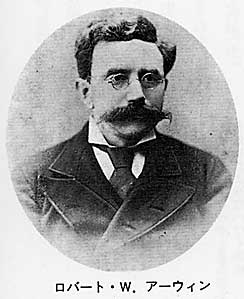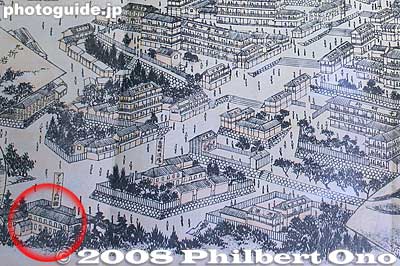The early Polynesian settlers to Hawaiʻi brought sugar cane with them and demonstrated that it could be grown successfully.
Sugar cultivation/processing started as early as 1802 and it continued to grow that about a century after Captain James Cook’s arrival in Hawaiʻi, it eventually dominated the landscape.
A shortage of laborers to work in the growing (in size and number) sugar plantations became a challenge. The only answer was imported labor.
Starting in the 1850s, when the Hawaiian Legislature passed “An Act for the Governance of Masters and Servants,” a section of which provided the legal basis for contract-labor system, labor shortages were eased by bringing in contract workers from Asia, Europe and North America.
The first to arrive were the Chinese (1852.) The sugar industry grew, so did the Chinese population in Hawaiʻi. Between 1852 and 1884, the population of Chinese in Hawai’i increased from 364 to 18,254, to become almost a quarter of the population of the Kingdom (almost 30% of them were living in Honolulu.) (Young – Nordyke & Lee)
Concerned that the Chinese had secured too strong a representation in the labor market, the government passed laws reducing Chinese immigration. Further government regulations introduced between 1886 to 1892 virtually ended Chinese contract labor immigration.
In 1868, an American businessman, Eugene M Van Reed, sent a group of approximately 150-Japanese to Hawaiʻi to work on sugar plantations and another 40 to Guam. This unauthorized recruitment and shipment of laborers, known as the gannenmono (“first year men”,) marked the beginning of Japanese labor migration overseas. (JANM)
However, for the next two decades the Meiji government prohibited the departure of “immigrants” due to the slave-like treatment that the first Japanese migrants received in Hawaiʻi and Guam. (JANM)
About this time (1866,) Robert Walker Irwin, at the age of 22, arrived in Japan to head the Yokohama office of the Pacific Mail Steamship Company. In 1867 the company launched the first regular trans-Pacific steamship service fulfilling a contract with the US government to provide monthly mail service between San Francisco and Hong Kong via Yokohama.
Irwin (January 4, 1844 – January 5, 1925,) great-great grandson of Benjamin Franklin, was born in Copenhagen, Denmark to former Pennsylvania politician (Mayor of Pittsburgh and member of the US House of Representatives) and United States Chargé d’affaires to Denmark William W. Irwin and Sophia Arabella Bache Irwin.
He was later hired to work for the Mitsui business conglomerate and cultivated a number of business and government contacts in Japan becoming acquainted with Japanese Finance Minister Masuda Takashi in 1872.
He also became good friends with Japanese Count Kaoru Inouye, who had toured the United States with Irwin in 1876 and became a major force for modernization within Japan.
Later (1880,) the Hawaiian consul general to Japan, Harlan P Lillibridge, took a leave of absence and Irwin was appointed to replace him; the appointment soon became a permanent one.
In March 1881, King Kalākaua visited Japan during which he discussed with Emperor Meiji Hawaii’s desire to encourage Japanese nationals to settle in Hawaiʻi.
As noted in Nupepa-Hawaiʻi, 1881, “His Majesty the King of Hawaiʻi arrived here yesterday morning at 8 am in the Oceanic. As the steamer moved up to her anchorage, the men-of-war in harbour dressed ship and manned yards, the crews of the Russian and Japanese vessels also cheering heartily as the Oceanic passed them. … He subsequently embarked in the Emperor’s State barge.”
Kalākaua’s meeting with Emperor Meiji improved the relationship of the Hawaiian Kingdom with the Japanese government, and an economic depression in Japan served as an impetus for agricultural workers to leave their homeland. (Nordyke/Matsumoto)
Irwin married Takechi Iki on March 15, 1882. This was the first legal marriage between an American and Japanese citizen and was arranged by Kaoru Inouye, then the Japanese Foreign Minister. (Irwin had six children. The eldest, Bella, founded the Irwin Gakuen School in Tokyo.)
Focused on Japanese immigration to support Hawaiʻi’s sugar labor needs, and not wanting to repeat the mistakes of the gennenmono episode, Irwin’s friendship and close relationship with Inouye smoothed negotiations; and in 1885 and the first legitimate Japanese immigration to Hawaiʻi occurred.
Irwin arranged for and accompanied the first 943-government-sponsored, Kanyaku Imin, Japanese immigrants to Hawaiʻi who arrived in Honolulu aboard the Pacific Mail Steamship Company City of Tokio on February 8, 1885. After returning to Japan, Irwin received government approval for a second set of 930 immigrants who arrived in Hawaiʻi on June 17, 1885.
The laborers were selected “from the farming class with particular attention given to physical condition, youth, and industrious habits.” They were predominantly unskilled male workers from Hiroshima and Yamaguchi, two neighboring prefectures in the Chugoku district of southwest Japan, and they were accustomed to rural village patterns of early marriage, high birth rates and large families. (Nordyke/Matsumoto)
With the Japanese government satisfied with treatment of the immigrants, Irwin was able to conclude a formal immigration treaty between Hawaiʻi and Japan on January 28, 1886. The treaty stipulated that the Hawaiʻi government would be held responsible for employers’ treatment of Japanese immigrants.
Irwin was the single most important figure in starting the official labor migration from Japan to Hawaiʻi in 1885. The Kanyaku Imin immigration system that Irwin negotiated concluded in June 1894 with 29,339 Japanese nationals having immigrated to Hawaiʻi. This government-sponsored immigration was quickly replaced with private immigration.
He later became a Japanese citizen and received both the “Order of the Rising Sun” and the “Order of the Sacred Treasure.” In Japan, he is called the “Father of Japanese Immigration to Hawaiʻi.”
In 1891, Irwin purchased a summer home in Ikaho. The residence is a designated Historic Place and is open to the public as a small museum to the Irwin family and Japanese immigration to Hawaiʻi. Irwin died January 5, 1925 and is buried at Aoyama Cemetery, Tokyo.










































